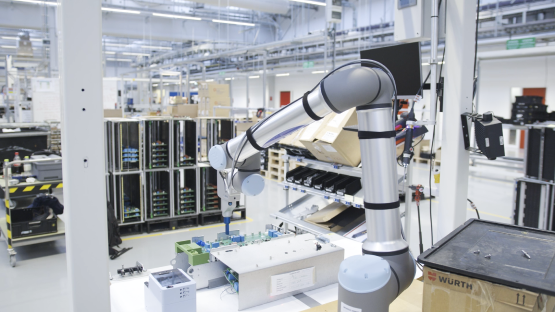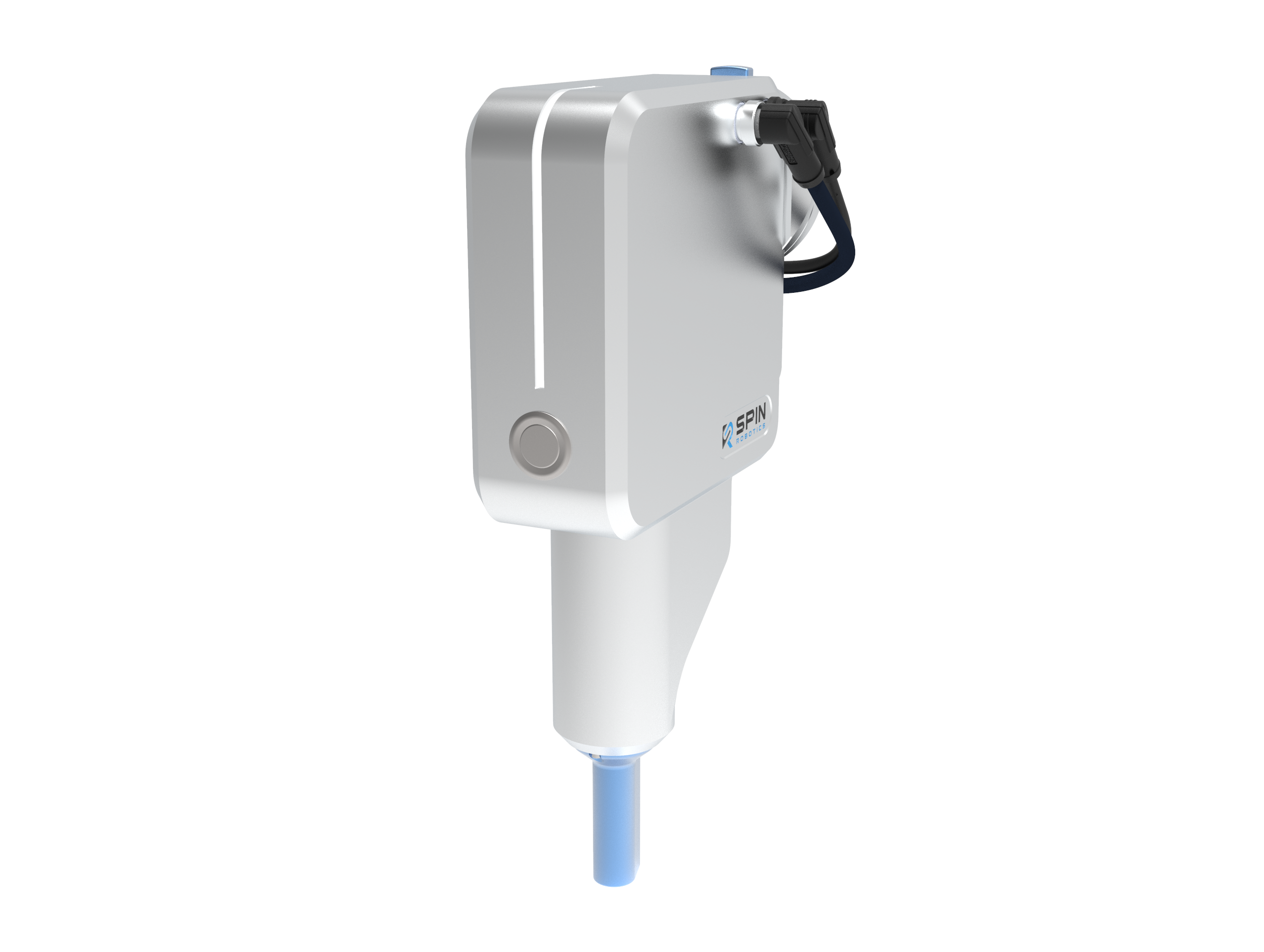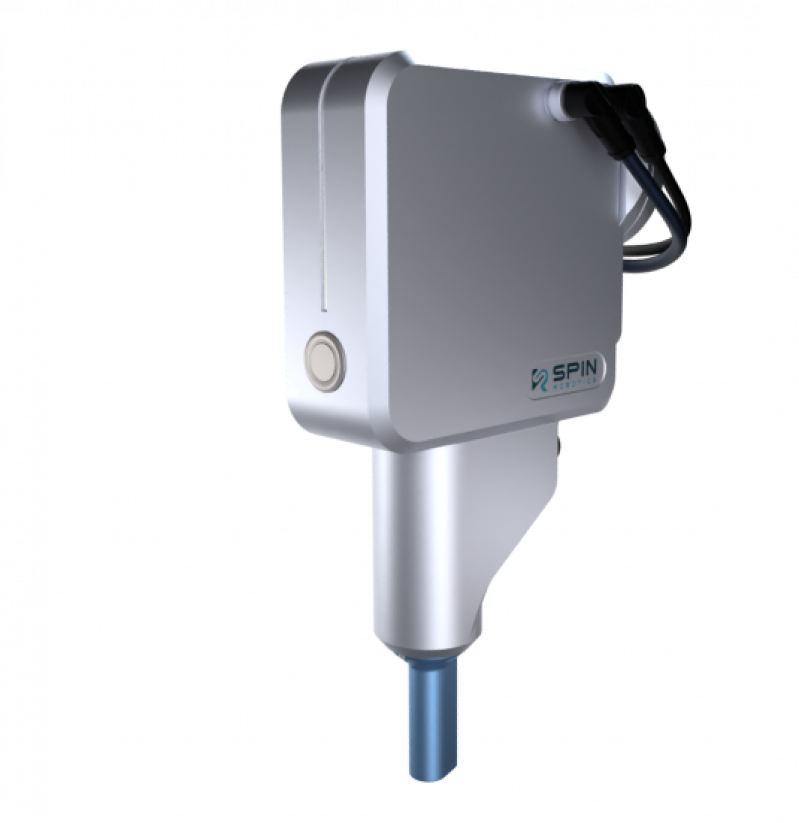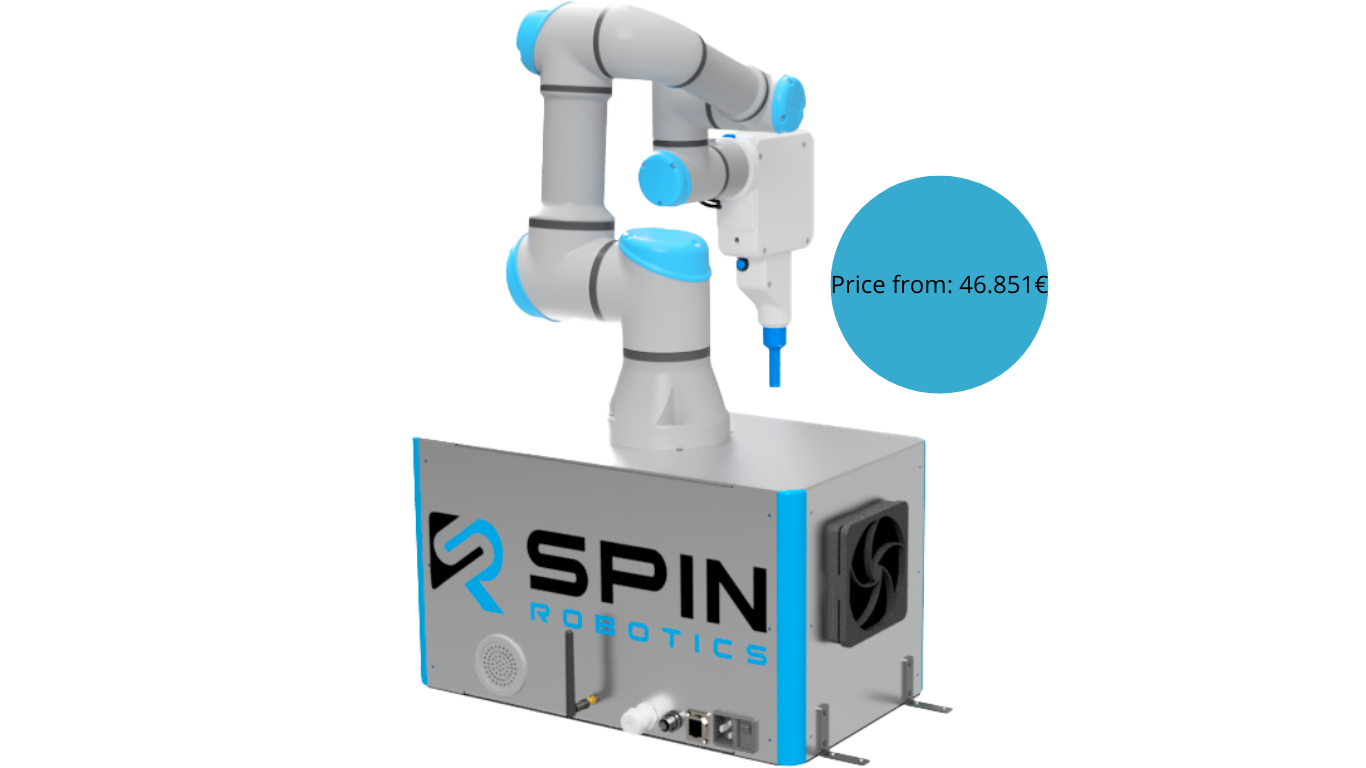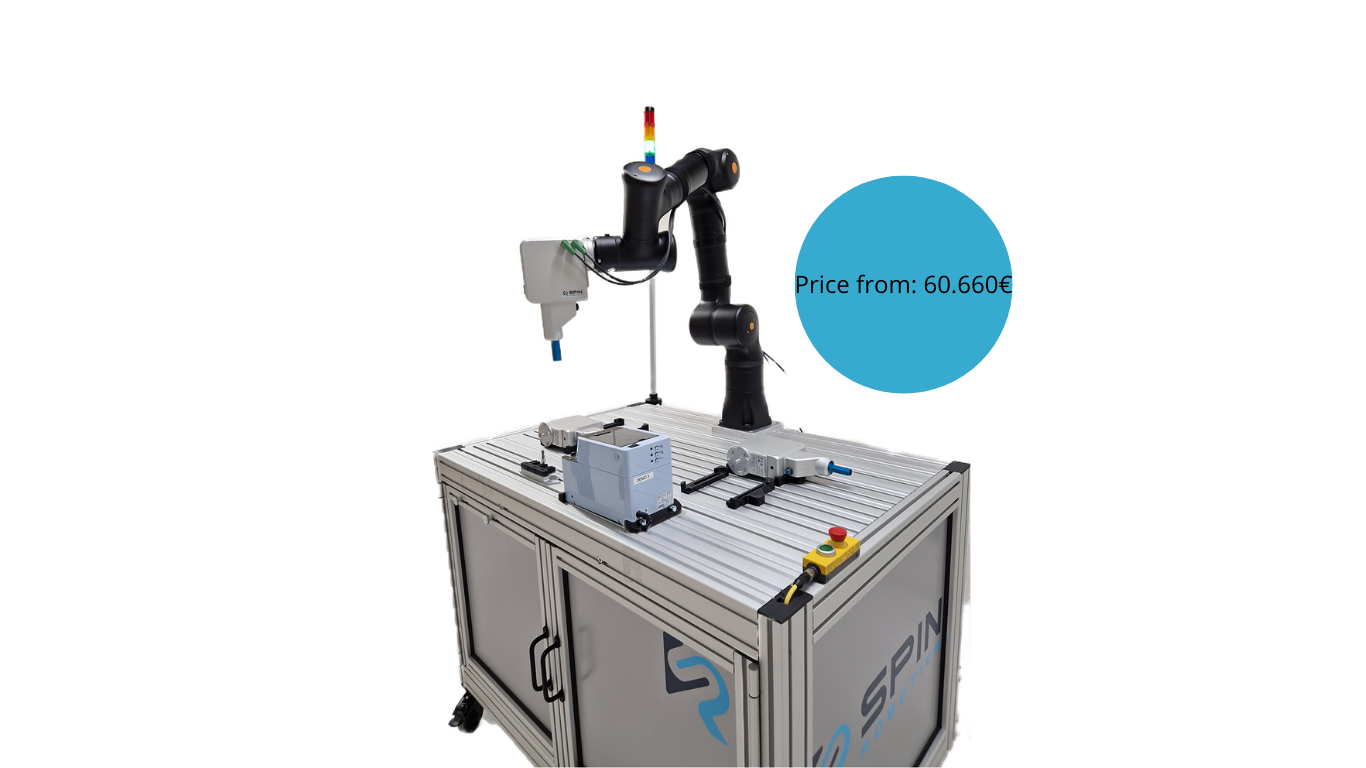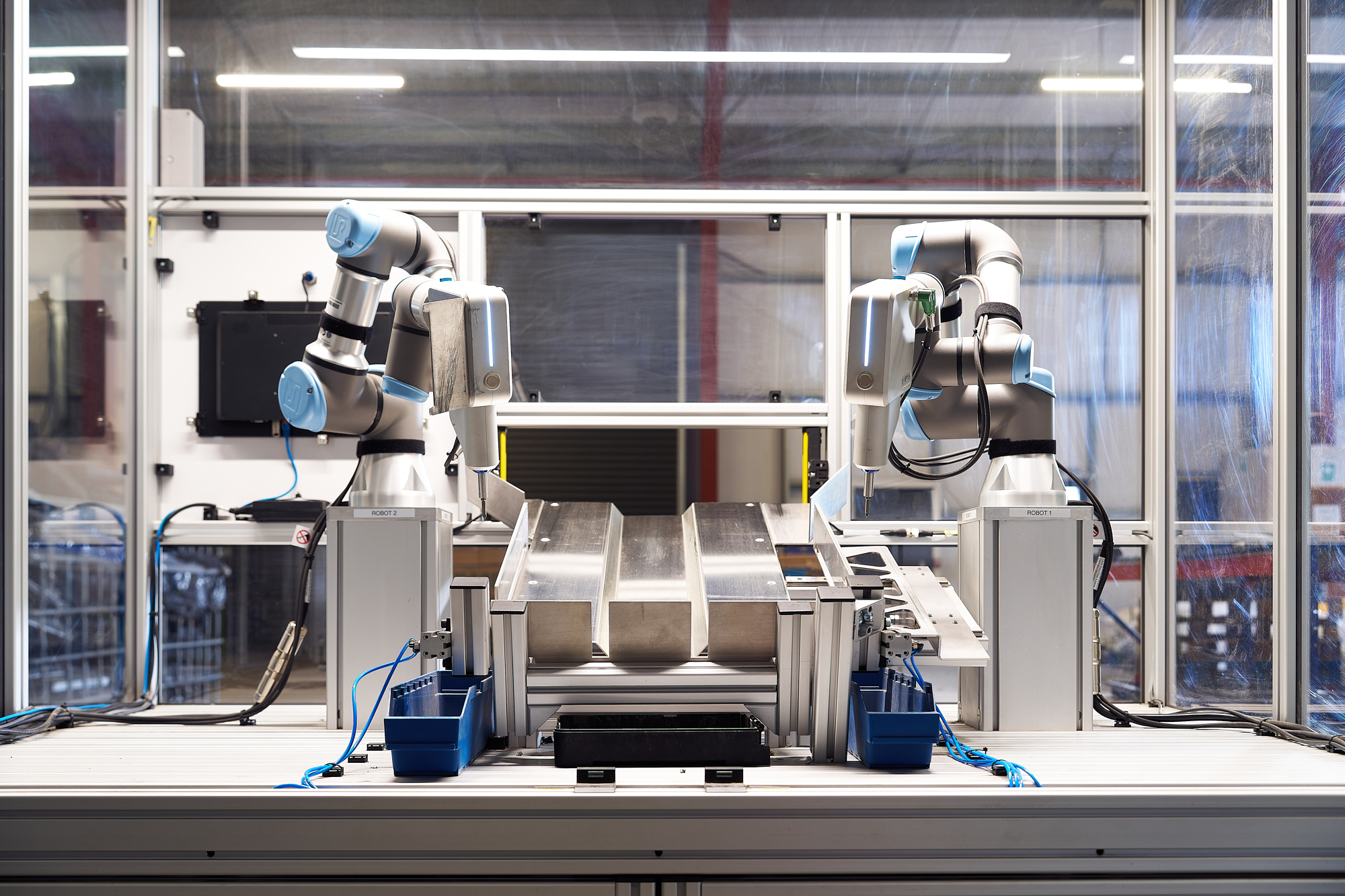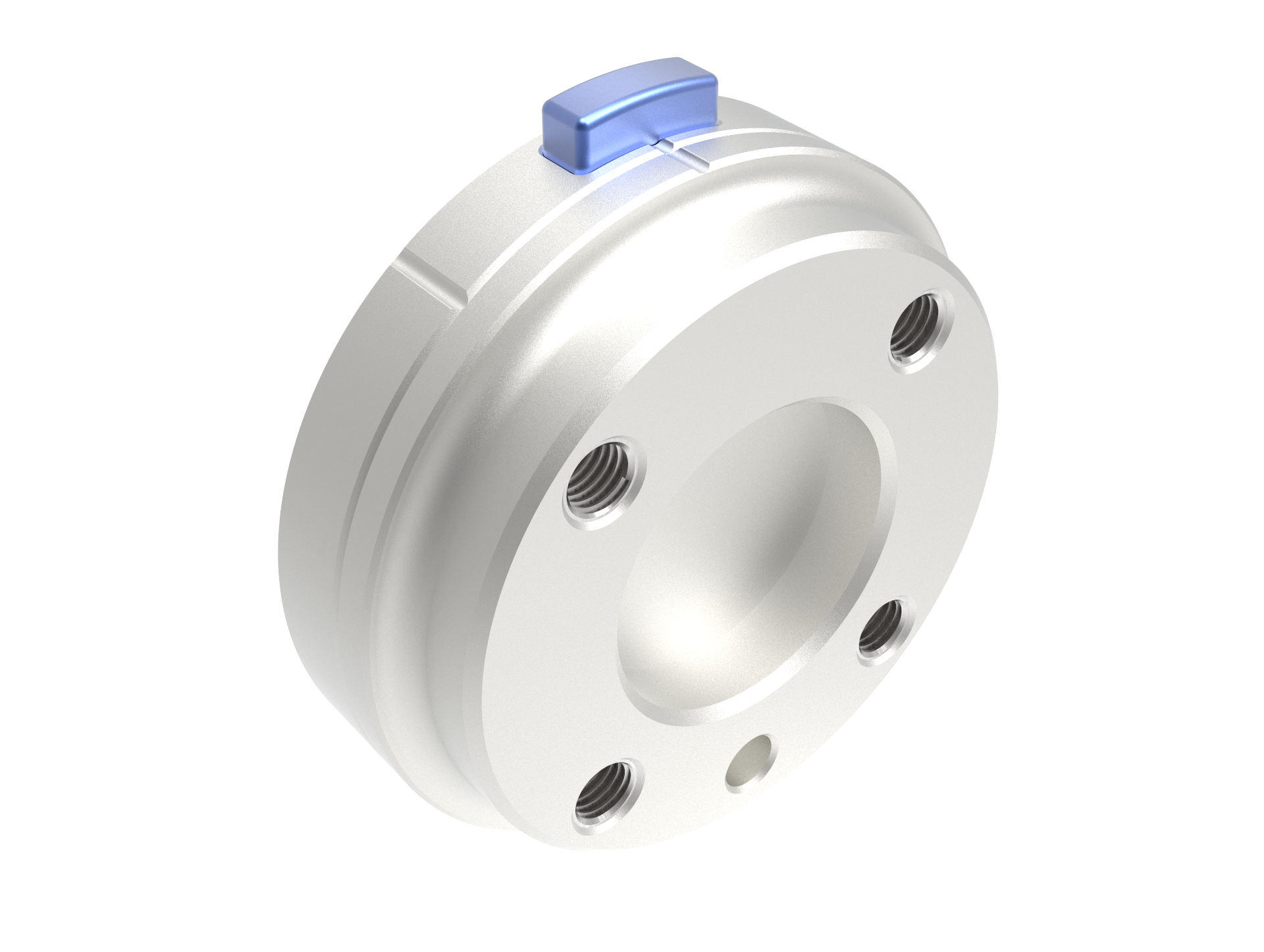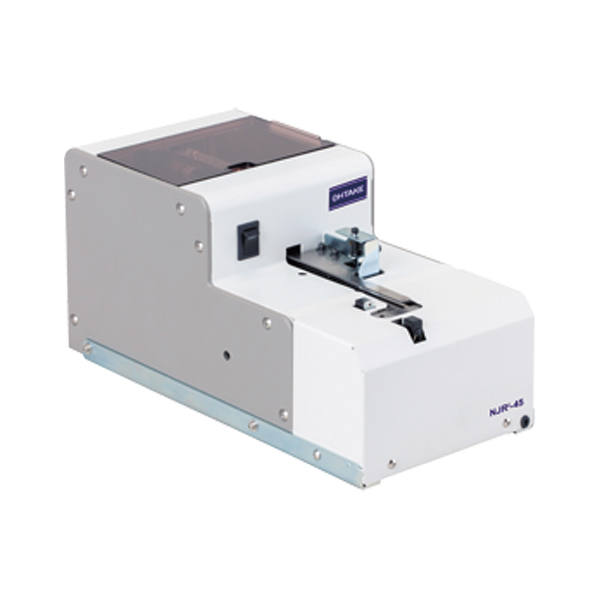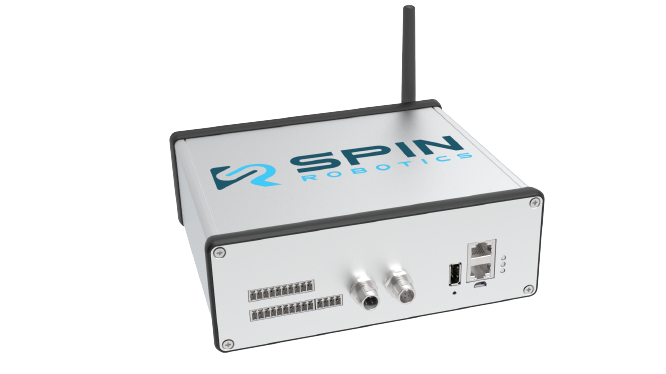Automated Cobot Screwdriving for Seamless Assembly Line Integration
Collaborative robots (cobots) are transforming manufacturing operations by making automation more accessible and efficient than ever before. Our user-friendly robots work alongside humans to handle repetitive tasks while maintaining high safety standards. In screwdriving applications specifically, cobots are proving to be game-changers for assembly operations of all sizes.
Manufacturers face increasing pressure to improve productivity while ensuring worker safety and maintaining quality standards. Traditional manual screwdriving can lead to repetitive strain injuries and inconsistent results, while conventional automation often requires extensive safety barriers and complex programming. Cobots offer a middle ground, combining the flexibility of human workers with the precision of automation.
Cobot screwdriving solutions are designed to tackle these challenges head-on. They can handle various screw sizes and types, work at consistent speeds, and apply precise torque every time. This reliability not only improves product quality but also reduces the physical strain on workers who would otherwise perform these repetitive tasks manually.
Stay Competitive with Cobots Solutions
For companies looking to stay competitive, understanding how cobot screwdriving solutions can boost efficiency and safety is crucial. Whether you're assembling electronics, automotive components, or furniture, these versatile cobots can help streamline your operations while creating a safer, more productive work environment.
Cobot screwdriving solutions combine advanced robotics with precision screwdriving tools to create efficient, user-friendly systems. These solutions typically consist of three main components: a collaborative robot arm, a specialized screwdriving tool, and smart control software.
The robot arm serves as the system's foundation, offering smooth, controlled movements that can be easily programmed for different tasks. Unlike traditional robots, these collaborative arms are designed to work safely alongside humans, featuring built-in sensors that detect unexpected contact and stop immediately.
The screwdriving tool itself is equipped with a patented safety system and a safety shield allowing true collaborative safety. Further the tool is equipped with precise torque control and depth sensing capabilities. This allows for consistent, accurate screw placement every time - something that's hard to achieve with manual screwdriving. The tool can handle various screw types and sizes, making it versatile for different assembly needs.
Cobot Solutions Offer Several Advantages:
- Consistent torque application
- Precise screw placement
- Automatic screw feeding
- Digital tracking of each operation
- Reduced physical strain on workers
The smart control software ties everything together, making it easy to program new screwdriving patterns and adjust settings. Workers can teach the cobot new screw locations simply by guiding the arm to the right spots, while the software remembers and repeats these movements perfectly.
This approach to screwdriving represents a significant improvement over traditional automated systems, which were often inflexible and required safety caging. Cobot solutions can be quickly moved between workstations and reprogrammed for different tasks, making them ideal for various assembly operations.
Cobot screwdriving solutions offer several game-changing benefits
Cobots deliver exceptional precision and consistency in screwdriving tasks. Cobots maintain the same exact torque and angle specifications throughout their entire shift. This consistency leads to higher quality products and fewer assembly errors.
Worker safety sees a major boost with cobot implementation. Handling repetitive screwdriving tasks, cobots help prevent repetitive strain injuries that often affect manual assembly workers.
When it comes to productivity, cobots really shine. They can work continuously with minimal downtime, completing screwdriving tasks faster than manual methods. Plus, they can operate during breaks and shift changes, keeping your production line moving.
Cost-effectiveness is a key advantage
Cost-effectiveness is another key advantage. While there's an initial investment, cobots typically pay for themselves within 12-18 months through increased output and reduced errors. They also help cut costs related to worker injuries and quality control issues.
Perhaps most importantly, cobots offer outstanding flexibility. They can be quickly reprogrammed for different products or assembly tasks, making them ideal for facilities with varying production needs. One cobot can handle multiple applications, from delicate electronics to robust automotive parts.
These benefits combine to create a more efficient, safer, and more productive assembly environment that benefits both workers and businesses alike.
Cobot screwdriving solutions are transforming various industries with their versatile applications.
Cobot screwdriving solutions deliver significant returns
Cost Analysis
Installing a cobot screwdriving system typically pays for itself within 12-18 months. The initial investment includes the cobot arm, screwdriving attachment, and basic programming. While this may seem substantial upfront, the monthly operational costs are remarkably low compared to traditional methods.
Productivity Gains
Companies regularly report 30-50% increases in assembly speed after implementing cobot screwdriving. A single cobot can handle repetitive screwdriving tasks consistently for multiple shifts, maintaining the same high level of precision throughout. This translates to:
- Faster production cycles
- Reduced bottlenecks
- More predictable output rates
- Better resource planning
Quality Improvements
The precision of cobot screwdriving significantly reduces errors and rework:
- 99.9% accuracy in screw placement
- Consistent torque application
- Automatic error detection
- Digital documentation of each operation
Labor Cost Savings
While cobots don't replace workers, they free up skilled employees for more valuable tasks:
- Reduced overtime needs
- Lower training costs
- Decreased injury-related expenses
- More efficient use of human resources
Long-Term Benefits
Beyond immediate returns, cobot screwdriving solutions offer lasting advantages:
- Scalable operations
- Reduced maintenance costs
- Lower energy consumption
- Improved workplace safety
- Enhanced product quality reputation
These combined benefits make cobot screwdriving a powerful tool for improving both operational efficiency and bottom-line results.
Electronics Assembly
Modern electronics manufacturing demands precise torque control and consistent screw placement. Cobots excel in assembling smartphones, laptops, and circuit boards, ensuring perfect alignment and preventing component damage. Their gentle touch and adjustable force make them ideal for handling delicate electronic parts.
Automotive Manufacturing
In automotive assembly, cobots handle everything from dashboard assembly to engine components. They can manage different screw sizes and torque requirements, switching between tasks quickly. This flexibility helps car manufacturers maintain high quality while meeting production targets.
Precision Screwdriving for Wood Applications and Furniture Assembly
Precision Screwdriving for Wood Aplications and Furniture AssemblyFurniture makers use cobots to join panels, attach hardware, and secure components. The robots' precise movements ensure consistent quality in cabinet making, chair assembly, and other furniture applications. They can work alongside craftspeople, handling repetitive screwdriving while workers focus on more complex tasks.
Spin Robotics offers a significant advantage for automated screwdriving in wood applications. Our system's unique capability to drive screws to a precise position ensures consistent and reliable results, even in the challenging environment of woodworking.
Key Advantages:
- Position-Controlled Screwdriving:
- Our tools can be programmed to drive screws to a specific depth or position. This eliminates the variability associated with torque-based screwdriving, which can be unreliable in wood due to its inconsistent density.
- The screwdriving process continues until the desired position is reached, guaranteeing accurate and uniform screw placement every time.
- Overcoming Wood's Challenges:
- Wood often presents higher and variable resistance during screwdriving. This can lead to inconsistencies in torque-based systems.
- Our position-controlled system overcomes these challenges by focusing on precise placement, ensuring consistent results regardless of wood density variations.
Why This Matters:
- Consistency: Achieve uniform screw depth and placement, leading to higher quality finished products.
- Reliability: Minimize errors and rework caused by inconsistent screwdriving.
- Efficiency: Optimize production processes by ensuring accurate screw placement on the first try.
Spin Robotics' technology provides a robust and reliable solution for automated screwdriving in wood, delivering precision and consistency that traditional methods cannot match.
Appliance Manufacturing
When assembling washing machines, refrigerators, or ovens, cobots provide reliable screwdriving for both internal components and external panels. They can reach tight spaces and maintain consistent torque, ensuring appliances are properly sealed and secured.
Industrial Applications for Cobot Solutions
Cobots also shine in:
- Medical device assembly
- Toy manufacturing
- Power tool production
- HVAC equipment assembly
- Machinery construction
In each application, cobots improve quality, reduce worker strain, and boost productivity while maintaining safe working conditions.
Spin Robotics Screwdrivers Come Equipped With Advanced Safety Features That Protect Workers
- Force sensing technology that stops operation if unexpected resistance is detected
- Speed monitoring systems that adjust based on human proximity
- Emergency stop buttons within easy reach
- Built-in collision detection that prevents accidents
- Integrated safety shield: Designed to prevent pinching injuries in the event of contact.
- Patented safety system: Prevents potential injury by triggering an immediate robot stop when forces exceed 5 kg.
Implementing Cobot Screwdriving Solutions Requires Planning
Planning and execution ensure optimal performance and return on investment. Here are some things to consider:
Planning and Assessment
Before installation, evaluate your current processes and identify specific areas where cobot screwdriving can add value. Consider factors like production volume, screw types, and workspace layout. Document your requirements and set clear goals for automation.
Integration Steps
- Choose the right location, ensuring adequate space and power supply
- Mount the cobot securely on a stable surface
- Install the screwdriving tool and necessary accessories
- Connect to your facility's network if needed
Programming Requirements
Modern cobots feature user-friendly interfaces that make programming straightforward. You'll need to:
- Define screw positions and paths
- Set torque and speed parameters
- Create error handling protocols
- Create screw programs using guided templates.
- Establish communication with other systems - OPC-UA
Training Needs
Invest in comprehensive training for:
- Operators who will work alongside the cobot
- Maintenance personnel
- Programming staff
- Safety supervisors
Maintenance Considerations
Regular maintenance ensures reliable operation:
- Daily visual inspections
- Weekly cleaning and calibration checks
- Monthly safety system verification
- Quarterly comprehensive service
- Annual professional inspection
- Quarterly torque calibration
Keep detailed maintenance records and establish a spare parts inventory for critical components. With proper implementation and maintenance, your cobot screwdriving solution will deliver long-term value and efficiency gains.
Get the Most out of Your Collaborative Robot system
Cobot screwdriving solutions work best when you follow these proven best practices and tips:
Optimal Setup Recommendations
- Position your cobot at a comfortable working height (between 35-45 inches) to reduce operator strain
- Keep screws and components within easy reach of both the cobot and operator
- Maintain clear pathways around the workstation for safe movement
- To ensure stability and accuracy, the cobot and fixture should be integrated on a unified platform
Common Challenges and Solutions
- Screw misalignment: Use vision systems and force sensors to detect and correct positioning
- Stripped screws: Program proper torque settings and approach angles for each application
- Tool changes: Set up quick-change systems for different screw types and sizes
- Ensure the availability of screw presenters compatible with various screw types.
- Process variations: Create flexible programs that can handle minor part difference
Performance Optimization
- Regular calibration of force sensors ensures consistent torque application
- Test different approach speeds to find the optimal balance of speed and accuracy
- Minimize the distance between the workpiece screw locations and the screw presenter for efficiency.
- Minimize the distance between the workpiece screw locations and bit-changing station for efficiency.
- Use data logging to identify bottlenecks and improvement opportunities
- Create standardized processes for common tasks to reduce programming time
Maintenance Guidelines
- Clean screw feeders and bit holders weekly to prevent jams
- Check and replace worn screwdriver bits regularly
- Inspect cables and connections weekly for wear
- Schedule monthly system checks to verify accuracy and safety features
- Keep detailed maintenance logs to track performance over time
Maximize uptime and maintain quality to get the best return on your automation investment. Train all operators on these best practices to ensure consistent results across shifts.
Cobot screwdriving technology continues to evolve rapidly, bringing exciting new possibilities to manufacturing and assembly operations.
What Does the Future Hold for Cobot Assembly Solutions?
Smart Integration and AI
The next generation of cobot screwdriving systems will feature more advanced artificial intelligence capabilities. These systems will learn from each operation, automatically adjusting torque and speed settings for optimal performance. They'll also predict maintenance needs before problems occur, reducing downtime and improving reliability.
Enhanced Sensing Capabilities
Future cobots will come equipped with more sophisticated sensors, allowing them to:
- Detect surface variations more accurately
- Identify different screw types automatically
- Adjust to changing material properties
- Provide real-time quality control feedback
Mobile Solutions
We're seeing a trend towards mobile cobot solutions that can move freely around the factory floor. These mobile units will:
- Navigate independently between workstations
- Adapt to different assembly tasks
- Reduce setup time between operations
- Increase flexibility in production layouts
Connected Systems
The Internet of Things (IoT) will play a bigger role in cobot screwdriving, enabling:
- Real-time performance monitoring
- Remote programming and troubleshooting
- Better data collection and analysis
- Seamless integration with other factory systems
Market Growth
Industry experts predict significant growth in the cobot screwdriving market over the coming years. This expansion will bring:
- More affordable solutions for small businesses
- Wider variety of specialized applications
- Improved user interfaces
- Greater accessibility for non-technical users
These developments will make cobot screwdriving solutions even more valuable for businesses looking to improve their assembly operations while maintaining a safe, efficient workplace.
Cobot screwdriving solutions are transforming manufacturing operations, offering a perfect blend of automation efficiency and human collaboration. As we've explored throughout this article, these innovative systems provide significant advantages in precision, safety, and productivity while remaining cost-effective and adaptable to various manufacturing needs.
The evidence is clear: businesses implementing cobot screwdriving solutions are seeing remarkable improvements in their assembly operations. From reduced worker strain to consistent quality output, the benefits extend across multiple aspects of production. The technology's ability to work alongside human operators while maintaining strict safety standards makes it an invaluable addition to any modern manufacturing facility.
Enhance Your Operations With a Cobot Assembly Solution
Take the first step toward a cobot assembly solution by:
- Conducting a detailed assessment of your current screwdriving processes
- Consulting with automation experts to identify the best cobot solution for your needs
- Starting small with a pilot program to demonstrate value
- Scaling up based on proven results
Contact our team today to learn how cobot screwdriving solutions can transform your manufacturing operations. Let's work together to create a safer, more efficient workplace for your team while boosting your bottom line.

